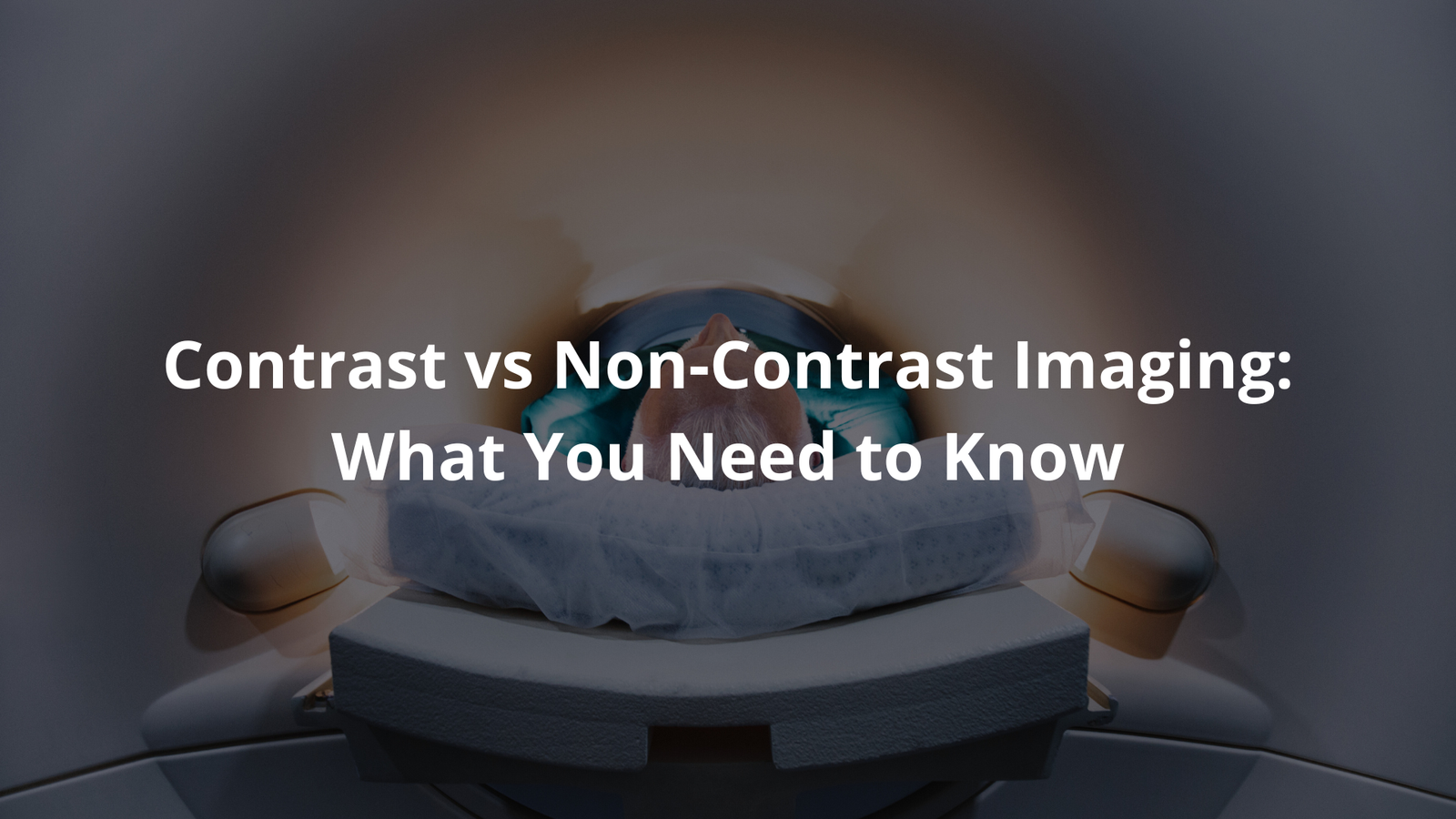Find out the differences between contrast vs non-contrast imaging in medical scans, what they do, and how they help doctors.
Inside a busy hospital, doctors rely on imaging to peek inside our bodies, trying to figure out what’s gone wrong. There’re two main ways to get these pictures: contrast and non-contrast imaging. Contrast imaging uses special dyes to make certain body parts show up clearer on the scan, sometimes it’s iodine-based, and sometimes it’s barium-sulfate.
Non-contrast imaging doesn’t use any dye, imaging the body in its natural state. Each has its strengths; non-contrast is safer for some, but contrast can offer better detail. Keep reading and decide what’s best for you!
Key Takeaway
- Contrast imaging uses special dyes to make pictures clearer.
- Non-contrast imaging doesn’t use any dyes and is safer for some patients.
- Doctors choose which imaging method to use based on the patient’s needs.
Contrast Imaging
Contrast imaging is like adding a splash of color to a black and white drawing, it can help illuminate things, adding brightness and awareness. When doctors need to see parts of the body better, they use contrast agents. It’s like a spotlight, and it helps to highlight any parts of the body that need attention. These agents can be iodine, which is used for CT scans, or gadolinium, which is used for MRI scans. And what does it do?
- Purpose: Contrast agents help show blood vessels. It is also good for organs, and helps to point out problems like tumors. This makes things easy to see and understand.
- Administration: A nurse puts it in the patient’s arm, through a tube called an IV. Then the machine takes pictures with the agent in the body. Quick and easy.
- Safety: Using agents is safe. It is mostly safe but there are a few side effects. Some people might have allergies or other reactions. Doctors have guidelines to make sure everything goes well, and that everything is safe. [1]
Non-Contrast Imaging
When doctors don’t use special liquid. It’s like taking a regular picture without any of the filters, nothing extra. Just the basics. It’s good to know the options.
- Purpose: Non contrast imaging is good for checking for brain bleeds, or broken bones. Can also help with sinus issues, which can be a real pain.
- Advantages: Some people can’t use contrast agents, because of allergies, or kidney problems. So, for them, non contrast imaging is a safer option. It is the only option that is out there. [2]
Choosing Between Contrast and Non-Contrast Imaging
Credits: Maher Alrahamneh, MD
Deciding, now. Should doctors use contrast, or non contrast imaging? That is something that they have to figure out. There are a few things to think about. Weighing the good and the bad.
- Diagnostic Needs: What do they need to find out? Do they need to see small details and get clearer pictures? Some conditions need contrast imaging.
- Patient Factors: How’s the patient’s health? How their kidneys are working and if they have any allergies? Important to know these factors.
- Risk Assessment: What’s the chance of a bad reaction to the contrast agent? Doctors will consider the risk before performing the scan. If the risk is there, doctors will skip contrast imaging.
- Emergency Situations: Stroke or injury? Need to act fast! There is no time to check kidney function before using contrast imaging. Need to act fast or there might be trouble, which is important.
Advanced Imaging Technologies
Down in Australia, some pretty cool machines. 3T MRI scanners. Fancy, right? These machines can take amazing pictures without contrast. Good for folks who can’t have contrast. This is good for looking at joints, the brain, or the spine when there’s no inflammation. Something to check and see. It might be a good thing to have this machine.
- 3T MRI scanners are in Australia.
- These machines can take amazing pictures.
- You don’t need contrast.
Informed Consent and Patient Education

Before using contrast agents, doctors need to explain everything to the patients. Need to make sure everyone is aware. RANZCR. The Royal Australian and New Zealand College of Radiologists.
Says it is important for patients to know what will happen. Should know everything. During the scan. And, also, what the risks might be. That’s a big one. And patients should also learn about their other options. Important.
- Doctors explain the scan.
- Doctors explain the risks.
- Doctors explain other options.
FAQ
What’s the difference between contrast and non-contrast medical imaging techniques?
Medical imaging techniques like MRI scans, CT imaging, and X-ray diagnostics can be performed with or without contrast media. Contrast imaging uses special dyes to highlight specific body areas, making internal structures more visible. Non-contrast methods capture images without additional agents, which can be useful for different diagnostic purposes. The choice depends on the specific medical condition, patient needs, and the type of diagnostic information required.
How do contrast agents work in medical imaging?
Contrast media, including iodinated contrast media and gadolinium-based contrast agents, enhance image quality by improving soft tissue visualisation. These agents help diagnostic radiology professionals see details more clearly, especially in vascular imaging and tumour detection. Non-ionic contrast agents are commonly used to improve contrast-to-noise ratio and image resolution, making it easier to identify subtle changes in body tissues.
What are the safety considerations for contrast imaging?
Patient safety is crucial when using contrast media. Medical professionals carefully assess risks, including potential contrast dye allergies and renal function impacts. Some patients may have concerns about radiation exposure, particularly in CT imaging. For vulnerable groups like pediatric and pregnancy imaging, extra caution is taken. Australian healthcare providers follow RANZCR guidelines and TGA regulations to ensure patient safety during contrast media administration.
When might a doctor choose non-contrast imaging methods?
Non-contrast imaging methods are preferred in specific scenarios. These include non-contrast CT scans, non-contrast MR angiography, and radiation-free imaging techniques. Doctors might select these methods for patients with contrast media allergies, compromised kidney function, or when minimising additional medical interventions is important. Joint examinations, bone imaging, and initial screening often use non-contrast techniques.
How do different imaging technologies compare?
Various medical imaging technologies offer unique advantages. 3T MRI scanners provide detailed brain scans and spinal cord imaging. Ultrasound technology offers real-time, radiation-free imaging. Phase-contrast imaging excels in cardiac and vascular examinations. Each modality has specific strengths for inflammation assessment, abdominal imaging, and diagnostic purposes, with contrast and non-contrast options available.
What challenges exist in medical imaging?
The Australian healthcare system faces several imaging challenges, including contrast media shortages, imaging wait times, and equipment maintenance. The Australian Medicare Benefits Schedule and Diagnostic Imaging Accreditation Scheme help manage these issues. Imaging facilities must navigate complex considerations like contrast media storage, quality control, and optimising usage across different diagnostic scenarios.
How do professionals choose between contrast and non-contrast imaging?
Imaging modality selection depends on multiple factors. Professionals consider patient-specific needs, diagnostic requirements, potential risks, and imaging interpretation skills. Factors like patient consent, potential side effects, and the specific medical condition guide the decision. Australian imaging research continues to advance techniques for more precise, safer, and more effective diagnostic approaches.
Conclusion
So, which one? Contrast or non contrast imaging? Its all about what the patient needs. Each and every one is different. Doctors will help their patients while keeping them safe. Following the rules. They make smart choices about the images they show. Color or plain. These help doctors see what’s going on inside. Hear about medical imaging? See all the ways.
References
- https://pmc.ncbi.nlm.nih.gov/articles/PMC4545190/
- https://www.scp.co.za/radiology-explained/non-contrast-vs-contrast-ct-scan-whats-the-difference/




